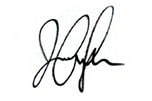I was in a mad dash for my car.
Thunder roared through the sky, rain and wind whipped around me, and I desperately wanted to be inside my tiny red Toyota so that I didn’t have to keep squishing around in my rain-soaked shoes.
But suddenly, a bright green mermaid logo peered out of the mist on the other side of the parking lot. And I found myself strutting past my car toward the Starbucks beacon.
When coffee’s siren song calls to a caffeine addict like myself, well … not even a monsoon will stop me.
It’s something that comes to mind now since we just celebrated National Coffee Day on Friday, September 29.
Coffee addicts around the country came out to claim their free coffee — rain be damned. And as an investor, it might make you consider coffee’s supply-demand story if you weren’t already.
As our natural resource expert Matt Badiali would say: That’s a smart move right now.
Yes, coffee has a jittery history: It’s one of the most volatile commodities to trade on the U.S. and global futures markets. Every year, sentiment and price are shaped by the weather conditions in key growing regions. When the forecast is just right, and there are no fungal plagues ravaging crops, prices are lower.
But then a critical area of coffee growth is hit by, say, a devastating drought, like Brazil — the world’s biggest producer, accounting for more than one-third of all coffee supply — in 1986. And coffee’s price rockets. (There are additional volatility drivers, by the way, such as persistent currency fluctuations.)
In the end, this type of unpredictable, jerky movement scares investors.
You can see what I mean below, where the graph highlights coffee’s volatile history:

However, if you’re paying attention — you can also see the opportunity here.
Fact is, global coffee demand is expected to double by 2050.
Meanwhile, we’re on the back of a three-year supply shortage, since critical growing regions like Brazil continue to experience severe and erratic dryness.
To top it off, the genetic diversity of the Arabica coffee bean — the highest quality bean and the main one consumed — is extremely low. That means the plant can’t adapt to changes in the environment quickly enough, underscoring the crop’s fragile grasp on survival.
Unsurprisingly, inventories are struggling. The International Coffee Organization expects coffee production to reach a record 153.9 million bags globally for the now-ending 2016 to 2017 season. But demand is forecast at 155.1 million bags. That’s a difference of 1.2 million bags.
Yes, much of this knowledge has been priced into coffee. But it’s clear that the crop is facing an “existential crisis” as Ric Rhinehart, executive director of the Specialty Coffee Association said.
And that’s the long-term supply-demand story.
I know you’re probably thinking: “That’s all well and good, Jess. But what does this mean for investors in the short term?”
Well, to that point, Matt Badiali has a few suggestions.
As he mentioned a couple of weeks ago, the price of coffee is heating up. The consensus estimate is a climb of another 5% for Arabica coffee prices over the next year. But Matt believes that’s conservative.
As he writes: “The short-term volatility should give us a double-digit move. This isn’t a slam-dunk, huge gain, but the sentiment extreme and the traders’ forecasts line up for a solid gain.”
And there are two ways to invest in it, as Matt pointed out: the iPath Bloomberg Coffee ETN (NYSE: JO) and the iPath Pure Beta Coffee ETN (NYSE: CAFE), launched in 2008 and 2011, respectively. If you pick up one of these, Matt suggests cashing out after a 10% or 20% gain.
To read about more natural resource trends on his radar, just click here.
With all that said, I think it’s time for me to go hunt down my next cup of coffee. (Hopefully not in the rain.)
Catch you next week.
Regards,

Jessica Cohn-Kleinberg
Managing Editor, Banyan Hill Publishing




